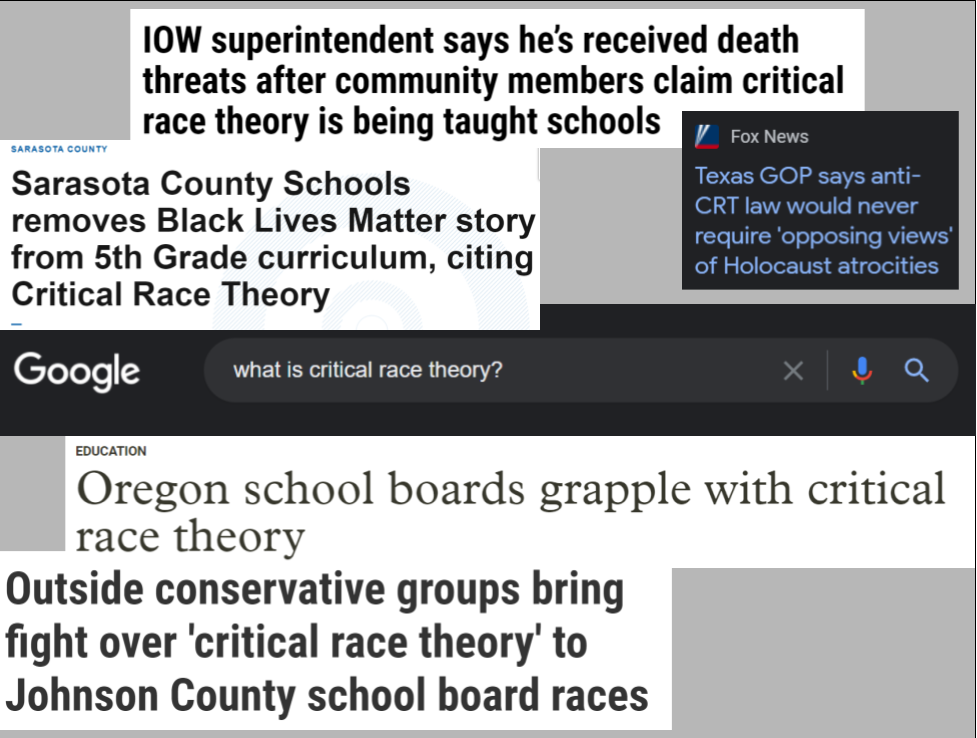
The phrase “Critical Race Theory” (CRT) has been thrown around a lot by the media, from former Secretary of State Condoleezza Rice denouncing it on The View to Republicans saying it’s “indoctrinating the youth,” and “shaming white children for their race.” But what is CRT, and why should it be taught in schools?
Assistant Professor of Black Studies at Portland State University, Dr. Bright Alozie, said that “[CRT] is calling out the racist structures in place.” CRT is simply bringing diverse perspectives from Black, Indigenous, and other People of Color (BIPOC). The term CRT originated in US law and was meant to examine racism that is built into the government, but has become a term used to describe curriculums in schools that teach about the racist history of the United States of America.
“History taught with just the facts isn’t CRT,” said Franklin High School teacher Rhonda Gray, who teaches US History and African American Studies. “I’m a little disturbed that so many people are up in arms over [CRT] in K-12. [Educators] are not teaching [Critical Race Theory] in elementary school, or in middle school. They are teaching history.” Though Critical Race Theory is not commonly being taught in schools by its true definition, this article will be focusing on what people are most upset about: kids and teens being taught about the racist structures in place and the racist history of the United States.
Contrary to claims against Critical Race Theory, it isn’t attempting to rewrite history. “Not telling the whole story is actually rewriting and erasing history,” stated Dr. Alozie. He contended that the current teachings of American history have been selectively written to show the “good” parts of the country’s past. Gray echoed this sentiment. “In teaching history, [CRT] fits in the analysis of factual historical events in the lens of race,” said Gray. Not talking about slavery, segregation, the genocide of Indigenous Americans, and other atrocities in the history of the United States is erasing important information that is critical to know in modern society. “There is no postsecondary institution or place of employment that isn’t talking about race… Race is significant, whether we like it or not or politicize it or not,” Dr. Alozie said. In the wake of the Black Lives Matter protest during the summer of 2020, the vast majority of workplaces are talking about racism. Not teaching students CRT is leaving them unequipped for future employment.
Although CRT is often referred to when talking about social sciences, Dr. Alozie emphasized the importance of integrating the theory into all subjects. “CRT is all inclusive. It isn’t restricted to law, history or philosophy. We have long taught students about primarily white authors, scientists, and highlighted the achievements of white politicians and inventors, while selectively ignoring the contributions of BIPOC.” Integrating diversity in perspectives in STEM and English classes, along with social sciences, is extremely important. Historically, BIPOC in these fields have had their work erased from history or had credit stolen by a white person. Showing successful BIPOC in all fields of study is vital to give representation to students of color, along with giving an accurate picture of how these fields were developed.
Additionally, Critical Race Theory isn’t teaching children that they are racist, but instead teaching empathy for people of different races. “[CRT] is a framework for healing and historical consciousness,” Dr. Alozie stated. “Children can learn historical empathy and compassion, learn to heal, and that we came from a past that we are not proud of, and thus need to reckon with and reconcile that past.” It’s important for kids and teens of all races to learn CRT because it teaches them how to empathize with each other. Gray agreed. “It’s vital to teach students to look through different lenses,” said Gray. Looking at history from all perspectives is important to understanding current events and for understanding each other’s point of view. Talking about and addressing racism also allows students of color to be able to talk about their personal experiences, while white students can learn about how racism impacts their peers every day.
CRT wants students to be able to see the racism built into society and modern America. “Whatever is in the roots of the country will inevitably come up in the leaves of history and our lived experiences,” said Dr. Alozie. If we, as leaves, aren’t taught about the rotting of the tree’s roots, how are we going to be able to change the tree’s current state? The same concept applies to the country; seeing the racism in past and present America can allow us to try and heal to make the future a better and safer place for all. However, if we ignore the rotting in our roots, the tree will continue to decay.

































